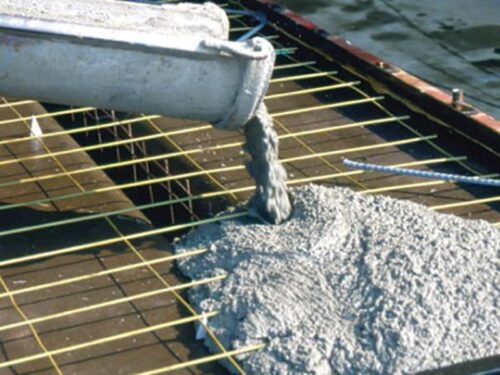CEMENT VS. CONCRETE — THEIR DIFFERENCES, AND OPPORTUNITIES FOR SUSTAINABILITY
Cement and concrete are two of the most common materials used in construction, but they are often used interchangeably or confused with each other. While cement is a crucial ingredient in the production of concrete, the two materials are not the same. Understanding the differences between cement and concrete, and the opportunities for sustainability in their production and use, is essential for creating a more sustainable built environment.
What is Cement?
Cement is a binding material made of limestone, clay, and other minerals that are finely ground into a powder. It is a crucial ingredient in the production of concrete, mortar, and other building materials. When mixed with water, cement creates a paste that binds together aggregates, such as sand and gravel, to form concrete.
Cement is manufactured through a process called calcination, where the raw materials are heated in a kiln to high temperatures (up to 1,450 degrees Celsius) to produce a clinker. The clinker is then ground into a fine powder and mixed with gypsum to create the final cement product.
The production of cement is a significant contributor to greenhouse gas emissions, accounting for about 8% of global CO2 emissions. The primary source of emissions is the energy required to heat the kiln and produce the clinker. However, there are opportunities for sustainability in cement production, such as using alternative fuels, such as biomass, instead of fossil fuels to power the kilns. Additionally, using alternative materials, such as slag or fly ash, as a partial replacement for cement can reduce the amount of clinker required and lower carbon emissions.
What is Concrete?
Concrete is a solid material made from a mixture of cement, water, and aggregates (such as sand and gravel). It is one of the most versatile and durable materials used in construction, with applications ranging from building foundations to highways and bridges.
The production of concrete also has environmental impacts, such as the carbon emissions associated with cement production and the use of natural resources, such as sand and gravel. However, there are opportunities for sustainability in concrete production. For example, using recycled aggregates in concrete can reduce the demand for new natural resources. Additionally, using less cement and more fly ash or slag in concrete can reduce the amount of carbon emissions associated with concrete production.
Differences between Cement and Concrete
While cement and concrete are related, they are not the same thing. Cement is an essential ingredient in the production of concrete, but it is not the only ingredient. Some of the key differences between cement and concrete include:
- Composition: Cement is a fine powder made of limestone, clay, and other minerals, while concrete is a solid material made of cement, water, and aggregates.
- Use: Cement is primarily used as a binding agent to hold together aggregates in concrete, mortar, and other building materials. Concrete, on the other hand, is a versatile material used in a wide range of construction applications.
- Strength: Cement has a high compressive strength but low tensile strength, which means it can hold heavy loads but is susceptible to cracking. Concrete has both high compressive and tensile strength, making it more durable and resistant to cracking.
- Color: Cement is typically gray or white, while concrete can be colored using pigments to achieve a wide range of hues.
Opportunities for Sustainability
While cement and concrete production have environmental impacts, there are opportunities for sustainability in their production and use. Some of these opportunities include:
- Using alternative fuels: Using alternative fuels, such as biomass, instead of fossil fuels to power the kilns that produce cement, can reduce carbon emissions.
- Using alternative materials: Using alternative materials, such as slag or fly ash, as a partial replacement for cement can reduce the amount of clinker required and lower carbon emissions.
- Using recycled materials: Using recycled aggregates in concrete can reduce the demand


